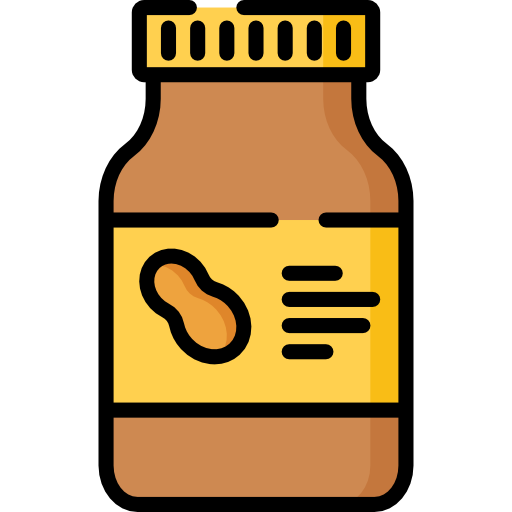
Introduction
Ah protein. The thing that most normal people aren’t talking about, but the one that people interested in health and wellness can’t shut up about (myself included lol). Protein is the third and final macronutrient that I will be discussing, and I’ve saved the most important for last. Check out my other 2 micronutrient analyses: Fat: The Innocent Criminal? and Carbs: The Devil in Disguise?.

.png)
Why is Protein so Important?
Protein is made up of what’s known as amino acids. There are 20 amino acids, 9 of which are essential. “Essential” means that the body does not create them on its own. Therefore, you must consume these 9 amino acids in order to survive and thrive. The other 11 are considered “nonessential”. You still need them to survive, but they can be created by your body itself. Here are the 9 essential amino acids, along with 3 key roles that each one plays in your body:
- Histidine
- Digestion
- Immune response
- Maintaining myelin - Isoleucine
- Energy regulation
- Hemoglobin production
- Muscle metabolism - Leucine
- Muscle repair
- Regulate blood sugar
- Stimulate wound healing - Lysine
- Calcium abosption
- Enzyme and hormone production
- Protein synthesis - Methionine
- Absorption of selenium and zinc
- Detoxification
- Metabolism - Phenylalanine
- Dopamine production
- Epinephrine and norepinephrine production
- Structure of enzymes - Threonine
- Energy production
- Fat metabolism
- Support skin and connective tissue - Tryptophan
- Control appetite
- Regulate mood and sleep
- Seratonin production - Valine
- Aid in muscle regeneration
- Energy production
- Stimulate muscle growth

.png)
Any food containing all 9 of these amino acids is considered to be a “complete protein”. Amounts of each amino acid do vary from food to food, but there is at least a significant source of all 9 amino acids available in a complete protein. All animal based products are complete protein sources, such as meat, fish, eggs, and dairy. There are some plant foods that are complete proteins, such as tofu and quinoa; however, for the most part plant proteins are “incomplete proteins”, meaning they lack 1 or more essential amino acids. Not all proteins are created equal.


Proteins are the building blocks for your body. Your body breaks down proteins into their amino acids, and uses them to perform most bodily functions. Protein isn’t just used for muscle growth; protein plays a vital role in all of the following:
- Energy production and hormone regulation
- Increased metabolism and aid in proper digestion
- Increased muscle growth
- Muscle and skeletal maintenance
- Proper cell structure
- Reduced soreness and fatigue
- Transportation of oxygen, cholesterol, and glucose throughout the body
- Wound healing and immune health


Other Benefits of Protein
Protein is arguably the most important nutrient, and for good reason. A proper protein intake is linked with all of the following health benefits:
- Build muscle, skin, bones, and cartilage
- Decreased irritability
- Fat loss and boosted metabolism
- Healthy hair, skin, and nails
- Improved exercise performance and recovery
- Improved immune system and decreased sickness
- Increased energy and mood
- Increased satiety and decreased hunger
- Lower cholesterol
- Lower blood pressure
- Lower blood sugar
- Muscle growth
- Regular hormones
- Repair tissue
- Reverse diabetes
- Slow down aging
- Support bone health
- Wound healing


How Much to Consume?
Protein is one of the 3 main macronutrients, along with fat and carbs. 1 gram of protein supplies about 4 calories, as opposed to 9 calories for fat and 4 calories for carbohydrates. A standard nutrition label sets 50 g of protein as 100% DV, but realistically you should be consuming much more than this, as this measurement is purely to prevent deficiencies. Ideally, you consume somewhere between 0.7 g and 1.0 g of protein per pound of body weight. For example, if you weight 150 pounds, you should aim to consume anywhere between 105 g and 150 g of protein every day to maintain optimal skeletal function and promote muscle growth.


What Kind to Consume?
Unlike fat and carbs, there are really no “bad” protein sources, though some are better than others. As mentioned above, animal protein sources are almost always better, as not only are they complete proteins, but the protein itself is more bioavailable. With animal proteins, the main thing you would want to watch out for is fat content or the context in which the meat is served, such as being fried or served on bread.


Plant proteins on the other hand mostly lack all 9 essential amino acids, while also being less bioavailable. For example, DIAAS (Digestible Indispensable Amino Acid Score) is a measure of the quality of a given protein, ranging from 0 to 1. Whereas animal based sources all score at 1.00 (or higher), most plant protein sources fail to reach this. 1 gram of beef protein is equivalent to only about 0.6 g of protein from beans or 0.4 g of protein from bread.


I also want to quickly talk about protein powders. The most common protein powder is whey, but casein is popular as well. These are the 2 milk proteins, and are thus complete protein sources. Vegetarian protein powders on the market are often made from soy, peas, rice, or peanuts, where some of these are not complete proteins.

.png)
Remember that protein powders are supplements afterall. Protein powder should not be your main source of protein; rather, they should be supplemental, and provide more when needed. I consume protein powder almost every day, but I always try to get my protein from whole food sources first. I have plenty of breakfast recipes and protein powder desserts using protein powder to help you hit your daily protein goals. There’s more to protein powder than just protein shakes.


Check out one of my previous posts What is the Best Protein Source, where I broke down over 60 high protein foods, and ranked them according to their price and bioavailability.


High Protein Foods to Avoid or Limit
- Fatty meats:
- 80% lean ground beef or turkey
- Fatty cuts of steak or pork
- Skin on chicken thighs


- Fried foods:
- Chicken fingers and nuggets
- Chicken and waffles
- Chicken parmesan
- Chicken wings
- Coconut shrimp
- Corn dogs
- Falafel
- Fried calamari
- Fried chicken
- General Tso’s chicken
- Kung Pao chicken


- Meat dishes:
- Burritos
- Cheeseburgers
- Chicken alfredo
- Lasagna
- Meatlovers pizza
- Nachos
- Pulled pork
- Ribs
- Sandwiches
- Wraps




High Protein Foods to Moderate or Consume Often
- Dairy:
- Casein protein powder
- Cottage cheese (any fat %)
- Fresh mozzarella
- Greek yogurt (plain, any fat %)
- Low moisture, part skim, shredded mozzarella
- Milk (any fat %)
- Whey protein powder


- Eggs:
- Egg whites
- Whole eggs




- Fish (fresh)
- Clams
- Cod
- Crab
- Cuttlefish
- Mussels
- Octopus
- Oysters
- Salmon
- Shrimp
- Tuna
- Tilapia


- Grains:
- Amaranth
- brown rice
- Buckwheat
- Oats
- Quinoa
- Vital wheat gluten (seitan)


- Lean Meats:
- 93% lean ground beef or turkey
- Chicken breast
- Liver
- Lean cuts of steak or pork
- Skinless chicken thighs
- Turkey breast
- Venison


- Legumes (canned or dried):
- Black beans
- Chickpeas
- Dark red kidney beans
- Green lentils
- Light red kidney beans
- Lupini beans
- Pinto beans
- Red lentils
- Soybeans
- Tofu


- Nuts:
- Almonds
- Brazil nuts
- Cashews
- Macadamia nuts
- Natural nut butters
- Peanuts
- Powdered peanut butter
- Pecans
- Pine nuts
- Pistachios
- Walnuts


- Seeds:
- Chia seeds
- Flax seeds
- Hemp seeds
- Natural seed butters
- Pumpkin seeds
- Sunflower seeds


- Vegetables:
- Edamame
- Corn
- Peas


Sources